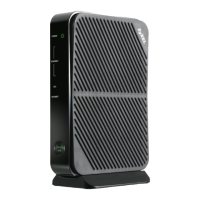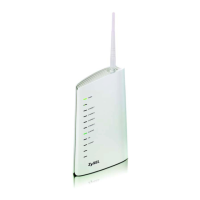Chapter 12 VPN
P-792H v2 User’s Guide
170
Remote Remote IP addresses must be static and correspond to the remote
IPSec router's configured local IP addresses.
Two active SAs cannot have the local and remote IP address(es) both
the same. Two active SAs can have the same local or remote IP
address, but not both. You can configure multiple SAs between the
same local and remote IP addresses, as long as only one is active at
any time.
Remote Address
Type
Use the drop-down menu to choose Single, Range, or Subnet. Select
Single with a single IP address. Select Range for a specific range of IP
addresses. Select Subnet to specify IP addresses on a network by
their subnet mask.
IP Address Start When the Remote Address Type field is configured to Single, enter a
(static) IP address on the network behind the remote IPSec router.
When the Remote Address Type field is configured to Range, enter
the beginning (static) IP address, in a range of computers on the
network behind the remote IPSec router. When the Remote Address
Type field is configured to Subnet, enter a (static) IP address on the
network behind the remote IPSec router.
End / Subnet
Mask
When the Remote Address Type field is configured to Single, this
field is N/A. When the Remote Address Type field is configured to
Range, enter the end (static) IP address, in a range of computers on
the network behind the remote IPSec router. When the Remote
Address Type field is configured to Subnet, enter a subnet mask on
the network behind the remote IPSec router.
Address Information
My IP Address Enter the WAN IP address of your P-792H v2. The VPN tunnel has to be
rebuilt if this IP address changes.
The following applies if this field is configured as 0.0.0.0:
The P-792H v2 uses the current P-792H v2 WAN IP address (static or
dynamic) to set up the VPN tunnel.
Secure Gateway
Address
Type the WAN IP address or the URL (up to 31 characters) of the IPSec
router with which you're making the VPN connection.
Security Protocol
IPSec Protocol Select ESP if you want to use ESP (Encapsulation Security Payload).
The ESP protocol (RFC 2406) provides encryption as well as some of
the services offered by AH. If you select ESP here, you must select
options from the Encryption Algorithm and Authentication
Algorithm fields (described next).
Encryption
Algorithm
Select DES, 3DES or NULL from the drop-down list box.
When DES is used for data communications, both sender and receiver
must know the same secret key, which can be used to encrypt and
decrypt the message or to generate and verify a message
authentication code. The DES encryption algorithm uses a 56-bit key.
Triple DES (3DES) is a variation on DES that uses a 168-bit key. As a
result, 3DES is more secure than DES. It also requires more
processing power, resulting in increased latency and decreased
throughput. Select NULL to set up a tunnel without encryption. When
you select NULL, you do not enter an encryption key.
Table 46 Security > VPN > Setup > Manual Key (continued)
LABEL DESCRIPTION

